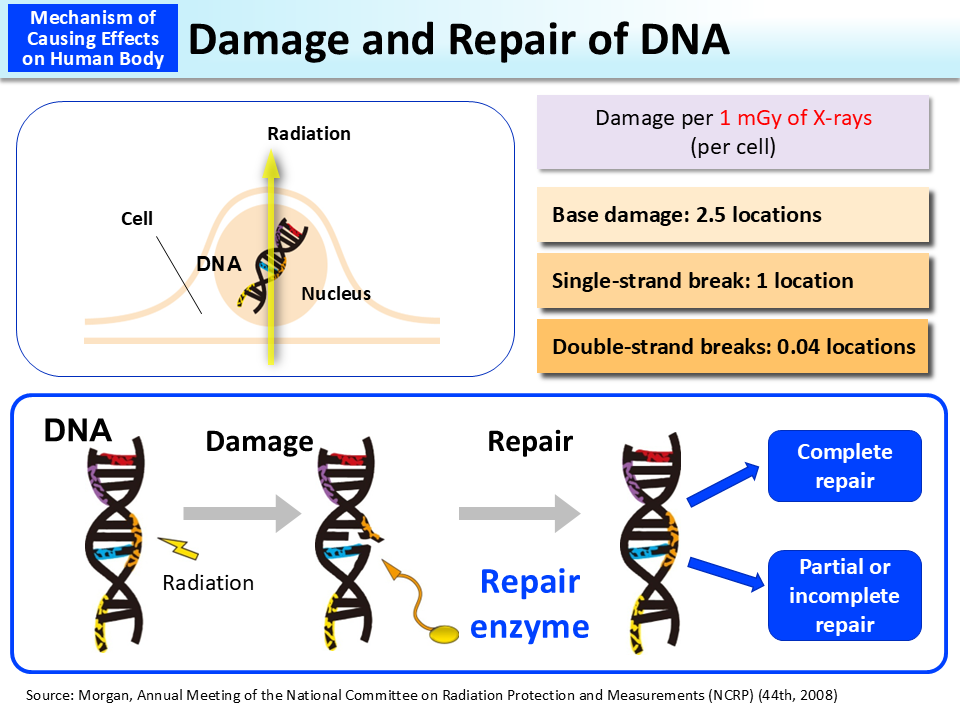Damage and Repair of DNA
Cells have DNA, the blueprint of life. DNA consists of two chains of sugar, phosphate and four different bases. As the genetic information is incorporated in the arrangement of these bases, bases are combined firmly to mutually act as a template in order to maintain the arrangement. When DNA is irradiated, it may be partially damaged depending on the amount of radiation.
1 mGy of X-rays is thought to cause a single-strand break at one location per cell on average. A double-strand break occurs less at 0.04 locations. Therefore, when 100 cells are evenly exposed to 1 mGy of X-rays, double-strand breaks occur in four cells.
DNA is damaged not only by radiation but also by carcinogens in foods, tobacco, chemical substances in the environment and reactive oxygen, etc. It is said that DNA is damaged at 10,000 to 1,000,000 locations per cell every day.
Cells have functions to repair damaged DNA. Damaged DNA is repaired by the action of repair enzymes. There are cases where DNA is completely repaired and partially or incompletely repaired (p.89 of Vol. 1, “DNA→Cells→Human Body”).
- Included in this reference material on March 31, 2013
- Updated on March 31, 2019

